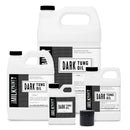Description
Tung oil with natural resin to add depth to your grain and instantly have an aged look.
FEATURES
- Naturally polymerizing wood finish
- Cures by oxidation, not evaporation
- Does not form a glossy finish no matter the number of coats
- Form a flexible waterproof finish
- Resists abrasion and acids
- Does not blister and peel (properly applied)
- Does not mold like linseed oil
- Long shelf life
- Does not darken with time like linseed oil
- Concentrated (thin one to one, doubles the coverage)
- Combined with “Citrus Solvent” makes an all-natural wood finish
- FDA approved for food contact
- Does not go rancid
- 7 to 10 days partial cure, 15 to 30 days full cure
- Can be mixed with any other of our Tung Oil Products (i.e. Pure Tung Oil, Dark Half, Half & Half, Outdoor Defense Oil)
COVERAGE
- Sample covers 1 sq. foot
- 8 oz. covers 25 sq. feet
- 16 oz. covers 50 sq. feet
- 32 oz. covers 100 sq. feet
- Gallon covers 400 sq. feet
This is coverage for the oil only and not diluted with Citrus Solvent.
HISTORY
Pure Tung Oil is a finishing product that provides a tough, flexible and highly water-resistant coating for a great wood finish when staining wood. It is classed as a drying oil along with linseed, poppy seed, safflower seed, walnut, soybean, oiticica, and a few other oils. Although it is relatively new to the Western world, tung oil has been known for centuries to the Chinese, and until this century, China was the main source for the oil. It comes from the seed of the tung trees, Aleurites fordii and Aleurites montana, deciduous trees that are very susceptible to frost damage. This vulnerability has restricted the cultivation of the tung trees to China and South America. Tung oil received a widespread application in China: in the building trades as a treatment for both stone and wooden structures; in marine trades as a preservative and water repellant on wooden boats.
It is said to have been introduced to the West by Marco Polo. From the 13th to the 19th century, tung oil had only limited use in the West. In the 19th century, it was adopted by the paint companies to become a major component in paints and varnishes. More recently, tung oil has gained favor over linseed oil for furniture finishing because it is faster drying and does not darken as much with age.
Payment & Security
Your payment information is processed securely. We do not store credit card details nor have access to your credit card information.




